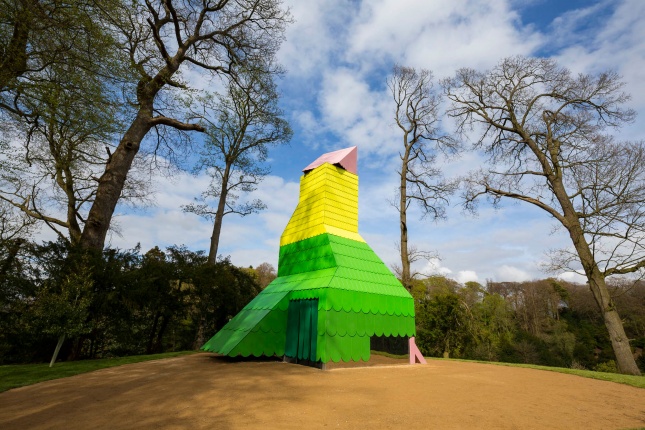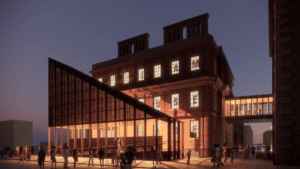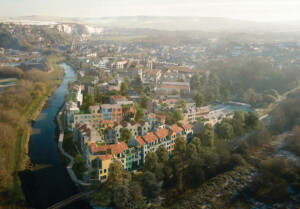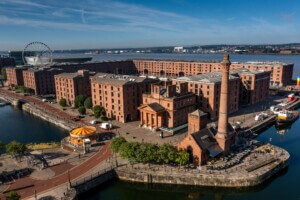A one-eyed spy bird doesn’t exactly sound like a child-friendly installation, but that’s exactly what Polly is. Designed by British firm Charles Holland Architects (CHA) for the National Trust as part of Folly! 2018, Polly is a colorful, parrot-like addition to the Studley Royal Water Gardens at Fountains Abbey in Yorkshire.
To those outside the U.K., the idea of parrots and other exotic birds populating Britain’s parks may sound farcical. However, during the age of Empire, many foreign imports flew in (or rather, were shipped in) to landscape parks across the country to demonstrate Imperial prowess. “In a less cuddly way, it addresses the issues of power, territory and wealth that underpin them,” said Charles Holland, founder of CHA, speaking to The Architect’s Newspaper (AN).

Some birds, namely Parakeets, have become a pest since coming over, but Polly is no such nuisance. Standing 30 feet tall and dressed in rounded timber shingles, the steel-framed folly is topped with a camera obscura capable of rotating 360 degrees. This is operated by a wheel at ground level, and vistas of the park looking across the River Skell are projected down onto a white disc inside. The back of the folly has a cantilevered tail and a double rubber curtain forms the entrance while the rest of Polly’s perimeter sports mirrored trim at the base.

As much Polly is a device for seeing, with its singular lens a nod to the ancient Greek cyclops Polyphemus, Polly is also meant to be looked at. Resting at the apex of Tent Hill, Polly occupies a spot that many visitors to the park will visually encounter. Across the River Skell, which bends round and almost encircles Tent Hill, is a location known as The Surprise View. This spot dates back to the 18th Century when John Aislabie, creator of the Studley Royal Water Gardens, constructed a view of the ruinous Fountain Abbey. Frustrated by his inability to purchase the abbey, Aislabie instead decided to own a view of it. “[Polly] playfully interacts with the whole mechanics of viewing within the garden,” Holland told AN. “I wanted to maintain that set of relationships.” Move over Cistercian abbey, now Polly has center stage.
Holland also explained how the folly drew from previous ephemeral structures that once inhabited the site, such as a tent which once hosted parties and which CHA’s folly exhibits the angular forms of. Polly is also light on its feet, a requirement demanded due to the archaeological remains of a temple below, thus meaning the folly has a wide, shallow foundation. Furthermore, the architect also cited the 18th century painting Parrots and a Lizard in a Picturesque Garden by Jakab Bogdany, as well as a frieze featuring parrots in foliage, the latter found at William Burges’ St. Mary’s Church in the Studley Royal grounds.

Polly will be installed at Fountains Abbey until November 4, 2018. There it is joined by The Gazing Ball from French artists Lucy and Jorge Orta, and The Cloud by Foster Carter, an 11-year-old schoolboy who won a competition for Folly! 2018.

















